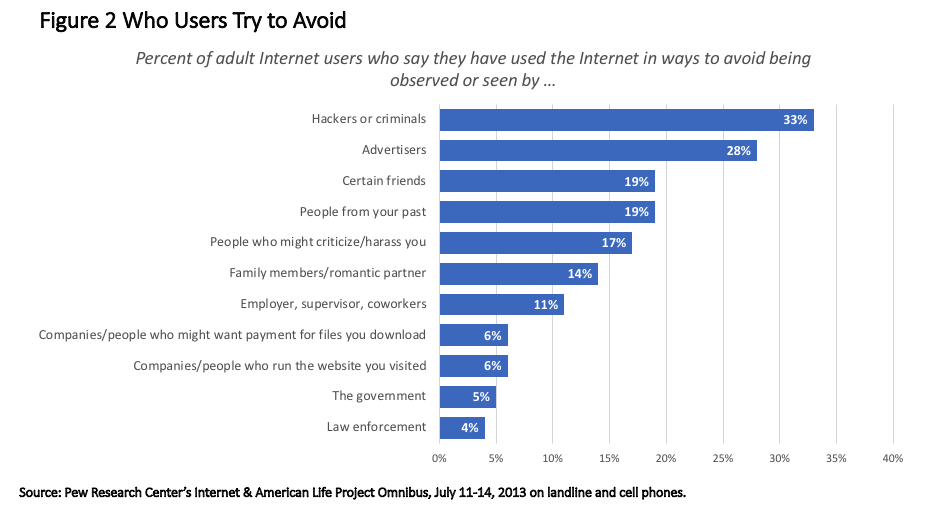Editor’s note: Erin Norman is senior solutions consultant, public policy, at research firm Heart+Mind Strategies, Reston, Va.
The revelation that Cambridge Analytica, through Facebook, was able to gain access to millions of users’ data gave the average American a glimpse into the world of digital and social media advertising. Most did not like what they saw. For years, platforms like Facebook have been letting advertisers and back-end developers access personal information from accounts as part of their effort to help brands deploy highly targeted campaigns.
The backlash against the social giants and digital advertisers during this scandal has likely given brands pause about how to allocate digital marketing dollars. In fact, even before news broke about Facebook data practices, Fortune 100 brands were reconsidering their digital spending. In 2017, Proctor & Gamble cut $200 million from digital media advertising and reallocated it to other channels including TV, audio and e-commerce in an effort to “reevaluate its marketing spend and weed out spend that is ineffective.” The company cited “brand safety” as a key concern with current digital advertising. More to the point, by reallocating this spend, they increased their reach by 10 percent.
Unilever CMO Keith Weed also made comments earlier this year about the need for “walled gardens,” or closed platforms that give brands little control over their content and access to consumers, to integrate with third-party measuring systems to ensure companies and brands are getting the media reach they are paying for. This is in process but not yet complete.
However, when this measurement rollout is complete, and brands feel confident in what they are getting for their ad spend, will social media platforms – some of the most attractive walled-gardens – still be worth the effort?
Social media
While social media use has been climbing over the last decade, most platforms aren’t reaching more than one-third of Americans (Figure 1).

Facebook, the one profile-based platform with far reach, is in a bit of a downturn. It suffered some severe public relations damage with the most recent Cambridge Analytica scandal. But even before that, Facebook data revealed that the company lost daily users in the U.S. and Canada for the first time in early 2018. Indeed, The Pew Research Center’s social media tracking research shows the percentage of Americans using Facebook has held steady since 2016.
Younger Americans do use social media in much higher numbers than older Americans. However, they are also more critical of it. A study in the U.K. showed that nearly three-quarters of students had taken some sort of break from social media and over half said they have been harassed or bullied through such platforms. Additionally, we may see parents trying to steer their children away from these platforms in the future as several studies have linked social media usage to depression in young adults.
There is also evidence that this young cohort is becoming more selective about how they use social platforms in an effort to avoid “phone boredom.” Teenagers today openly talk about how they “have seen everything there is to see on the Internet” and describe constantly refreshing social feeds only to be disappointed that everything is the same or old news. While the under-25 set spends a great deal of their time online, their threshold for what is interesting enough to stop and look at seems to be higher than any other generation. This has strong implications for how marketers reach this generation and get them to engage with content.
Pushing past social media, brands face significant hurdles reaching consumers through digital advertising. Over four-in-five online consumers say they have taken steps to be anonymous online. The No. 1 motivation is to protect against hackers and criminals but a desire to hide from advertisers follows close behind (Figure 2).

Digital advertising – worth the investment
Despite all of this, social media and other digital advertising can still be worth the investment. It can be an incredibly effective tool for reaching consumers and certainly for engaging with them. But it is vital that brands understand, at a very specific level, who they are trying to reach, why that particular audience is worth speaking to and what channels are most likely to engage them.
Traditional consumer segmentations are a good first step. But to really understand where potential customers are and how to reach them there, deeper research is needed. This will likely be even more critical as today’s teenagers fully enter the marketplace having grown up with a seemingly endless number of media channels at their fingertips and developed a keen ability to filter advertising out. I’ll end this article with three key ways to understand these issues.
- Create a media usage/engagement segmentation that can be overlaid on a consumer segment to understand exactly where your most valuable consumers can be reached.
- Turn to values-based research to understand the emotional triggers that engage your target audience. This gives advertisers the information, emotional pulls, key words and phrases they need to make digital content stand out in a crowded space.
- Use journey research to uncover exactly which points in the purchase process can be influenced by digital media and what else it is competing against.
